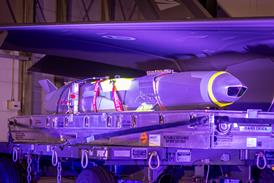Paul Lewis/WASHINGTON DC
Bombardier warns that rapid growth in the 50- to 70-seat regional jet market is undermining the requirement for a larger 100 plus seat aircraft and has thrown into doubt the viability of the Canadian manufacturer's proposed new BRJ-X development.

Company executives are down-playing plans to proceed with the BRJ-X in the near future in the wake of the recent launch of the 86-seat CRJ900 stretch derivative. Bombardier had until recently stated that the 100-to 115-seat BRJ-X-110 was targeted for launch approval by the end of this year.
"The project has definitely been put on the backburner," says an industry source familiar with the programme. Bombardier has indicated it might revisit the programme in a year, but recent market analysis indicates that the requirement for such an aircraft is contracting as the regional jet market fills out with smaller jets.
"If that market fragmentation continues with the increased numbers of 50-seaters and 70-seaters we're placing on the market, one has to question whether demand for a replacement 100-seater going forward would necessarily be in the volume that people are thinking of," admits Trung Ngo, Bombardier vice president marketing.
A recent AvStat forecast has indicated a requirement for around 4,000 jets seating 110 or fewer passengers between 1999 and 2008. A succession of new orders has increased Bombardier's total CRJ orderbook to 1,760, including 478 still be delivered and 862 conditional orders and options. Embraer ERJ-135/145 sales total 1,139 plus another 325 ERJ-170/190s.
As a result the BRJ-X has been pinched from both ends of the regional and mainline airline market. The decision to further stretch the CRJ series removed the need for the 90-seat BRJ-X-90, while moves to reposition the jet into the 100-130-seat segment brought Bombardier into competition with the Boeing 717 and Airbus A319.
"Going head to head with Airbus and Boeing certainly raised some questions in Montreal about whether they should be doing that," says a source. Bombardier is instead targeting the CRJ900 at mainline carriers which cannot efficiently operate older 737-200s and DC-9s and need a smaller more cost effective jet.
"What airlines are really concerned about is that they need to serve point to point but can't because they don't have the aircraft or they're operating these older aircraft and losing money. This is why the regionals are growing at the pace they are," says Trung.
Source: Flight International























